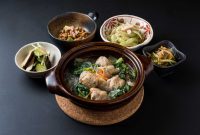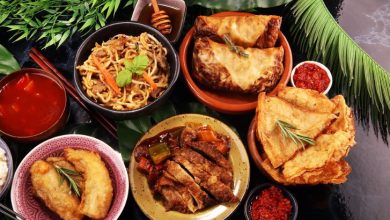10 Japanese dishes you must try
In 2019, my old dream came true: I came to Japan. The most amazing, the most developed, the most unusual country turned out to be both the same and not the same as I imagined. But what I did not expect for sure is that literally everything and literally everywhere will be delicious.
Yes, some dishes are unusual, some are exotic to the point of wildness, but every single one is cooked flawlessly, with attention to the guest and respect for the products. Japan, on top of everything, turned out to be an ideal place for gastronomic travel!
With all the desire, you often don’t run into Japan. But these ten dishes you must try to understand what Japanese cuisine is. Cook them yourself or buy a ticket to Tokyo as soon as possible – it’s up to you.
sushi
Like ours, Japanese sushi is the same rice with raw fish, only in Japan both have completely different taste and quality. There is usually a little less rice, noticeably more fish, plus in Japan sushi is often not dipped in soy sauce, but smeared or poured over it: fish is supposed to be seasoned with sauce, not rice, which is already seasoned with rice vinegar.
In institutions of different formats, you can find both different types of sushi and different ways of serving them. In addition to the traditional way for us, when an ordered set of sushi is brought to you as a whole, there are eateries in which the chef prepares sushi and sends it along the conveyor on small plates.

and the consumers themselves choose what they like best and pay based on the number of empty plates . In traditional restaurants, the chef prepares sushi right in front of the guests, putting new sushi on their plates after they have eaten the previous one.
In institutions of different formats, you can find both different types of sushi and different ways of serving them. In addition to the traditional way for us, when an ordered set of sushi is brought to you as a whole, there are eateries in which the chef prepares sushi and sends it along the conveyor on small plates.
and the consumers themselves choose what they like best and pay based on the number of empty plates . In traditional restaurants, the chef prepares sushi right in front of the guests, putting new sushi on their plates after they have eaten the previous one.
If you order sashimi in Japan, pay special attention to the tuna. Depending on the part of the tuna from which the meat was cut, it has a different taste and fat content. The fattest meat – the belly of tuna, Toro – is considered the best and is valued much more than other “cuts”.
Tempura
A dish that the Japanese borrowed from the Europeans, altering it in their own way. In its current form, tempura is fish, seafood and vegetables that are dipped in a light batter and fried until crisp in a large amount of hot oil.
The choice of products for tempura depends on the season and other factors. Some products are quite standard – eggplant, shrimp, mushrooms, others seemed unusual to me, for example, shrimp heads, which are fried and served separately.
No less than the products, the composition of the batter, the temperature and quality of the oil, and the skill of the cook are important. Avoid places where the smell of rancid oil is in the air. The most delicious tempura will have a white or creamy batter rather than yellow or brown, and the filling will remain very juicy.
Shabu-shabu
The funny phrase “shabu-shabu” is either a modified Chinese name (and this dish came to Japanese cuisine from Chinese), or an imitation of the sound that meat makes when it is “rinsed” in a rich hot broth.

In addition to thin slices of meat, vegetables, mushrooms, herbs, noodles, meatballs and other ingredients are boiled in the broth. The choice is up to you, since shabu-shabu is one of those dishes that are prepared on the table by the eaters themselves. Boiled meat is dipped in sauces or a beaten raw egg, but the broth itself is usually not eaten.
Sake
It is difficult to taste sake in Russia, neither the climate, nor the atmosphere, nor compatibility with food, so you need to drink sake in Japan. To taste, this drink resembles white wine, but with a more complex and rich aroma. Sake can be fruity and sweet or dry, so it’s best to go with local recommendations first. The most authentic sake bars are not in Tokyo, but in Kyoto – and it was in one of these rather unsightly sake bars that I had my most delicious dinner in Kyoto.
Over the past 30 years, the production of sake has come a long way, reducing the unpleasant flavors that sake was traditionally served hot to mask. Today, high-quality sake (one of the indicators of the quality of a drink is the degree of polishing of rice) is not heated.
but cooled, and drunk from small thimble, pouring sake from a bottle or from glasses. If you order a glass of sake, it will be brought in a small saucer and poured with a slide. You must first bend over to the glass, drink sake and pour the contents of the saucer into the glass.



